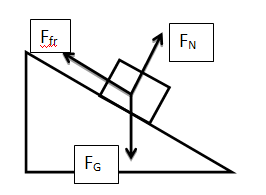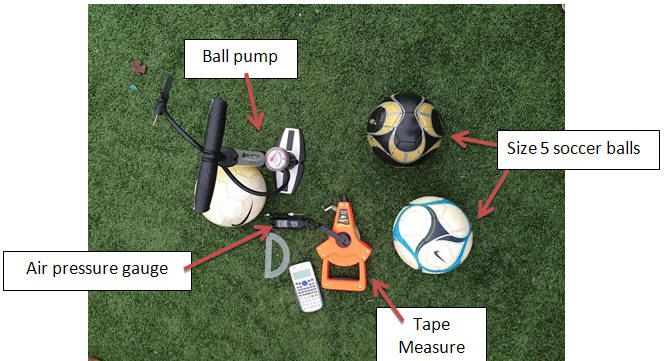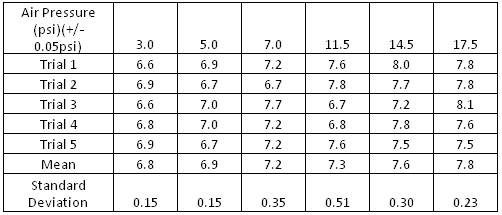Effect of Air Pressure on
Distance of a Soccer Ball
By: Ayumi Mizuno, Esther Zhao, Lauren "YO" Young, and STEPHANIE HUGS
Table of Contents .:.
Air is composed of a mixture of gases including oxygen, nitrogen carbon dioxide, argon, water vapor and small amounts of other various gases. These gases are made of tiny particles that are constantly moving. When the moving molecules come across objects, they exert force on objects known as air pressure. Since pressure is the amount of force per unit area, pressure is defined as P = F/A . Pressure is measured in the unit pascal (Pa), which is equal to the unit of N/m2. Air pressure is frequently measured in units of pounds per square inch, abbreviated as psi. Pressure is only measured by its magnitude since it is a scalar (Twicken).
In most sports, an inflated ball is a necessary component of the game. In soccer, international matches managed by FIFA require balls to have a pressure between 0.6 to 1.1 atmosphere at sea level, which is approximately 8.8 to 16.2 Psi (FIFA). The standard size of a soccer ball used in professional games is a size 5 ball with a diameter of 9 inches. Before each game, the quality of the ball is assessed by a referee to guarantee the ball has an appropriate amount of air pressure for playing (Tarwater).
When a soccer ball rolls on a surface, there is friction between the surface and the surface of the ball, called rolling friction (Giancoli). Friction is calculated as Ffr = μmg where μ is the coefficient of friction, which depends on the nature of two contacting surfaces. On an incline plane, there is a normal force acting perpendicular to the surface of the incline, a force of friction acting in the opposite direction of the motion of the moving object, and a force of gravity acting downward.

In this experiment, a soccer ball with different pressures will be rolled off of an incline plane to see the effect of pressure on the distance the ball travels. An incline plane will be used to demonstrate an application of equal force for each trial.
Statement of the Problem .:.Top
The purpose of this investigation is to determine the effect of air pressure inside a soccer ball on the distance it travels when an equal force if applied.
We believe that an increase in the air pressure inside a soccer ball will cause an increase in the distance it travels as well. This is because a ball with a high concentration of air pressure inside will exert a greater force on the surface of the ball, allowing the ball to deform less when in contact with the ground surface.
This experiment included a size 5 soccer ball, a pressure gauge, a ball pump, ball inflating needles, a wood board, a 3’ tape measure, and a chair or a bench. The experiment was also done on a turf field.
Setup:


We conducted our experiment on a turf field. The wood board was laid against a bench at a fixed angle of 24 degrees with the surface of the ground throughout the entire experiment. To fill the soccer ball with air, we first injected the needle attached to the ball pump into the ball. We then inflated the soccer ball with the air pump by pushing down on the handles of the pump. When deflating the ball, we injected a needle into the ball and allowed air to move out of the ball. To determine the pressure, we injected a needle attached to a digital ball pressure gauge and read the pressure. When taking the needle of the pressure gauge out from the ball, we made sure to do so carefully, to prevent air from leaking out. The pressures tested were 3.0, 5.0, 7.0, 11.5, 14.5, and 17.5 psi.
To collect data, we placed the ball on the top center of the incline made by the wooden board. We released the ball without pushing or adding any additional forward force. After the ball finished rolling and came to a complete stop, we measured the distance from the bottom of the incline to the center of the ball with a tape measure.
Data Table: Distance the Soccer Ball Traveled (m)(+/-0.05m)


As the pressure of the soccer ball increased, the distance the ball traveled increased as well. The ball with the greatest pressure of 17.5 psi had the greatest average distance of 7.8 m, while the ball with the lowest pressure of 3.0 psi had the lowest average distance of 6.8 m. This supports our hypothesis that an increase in the air pressure inside a soccer ball will cause an increase in the distance it travels as well.